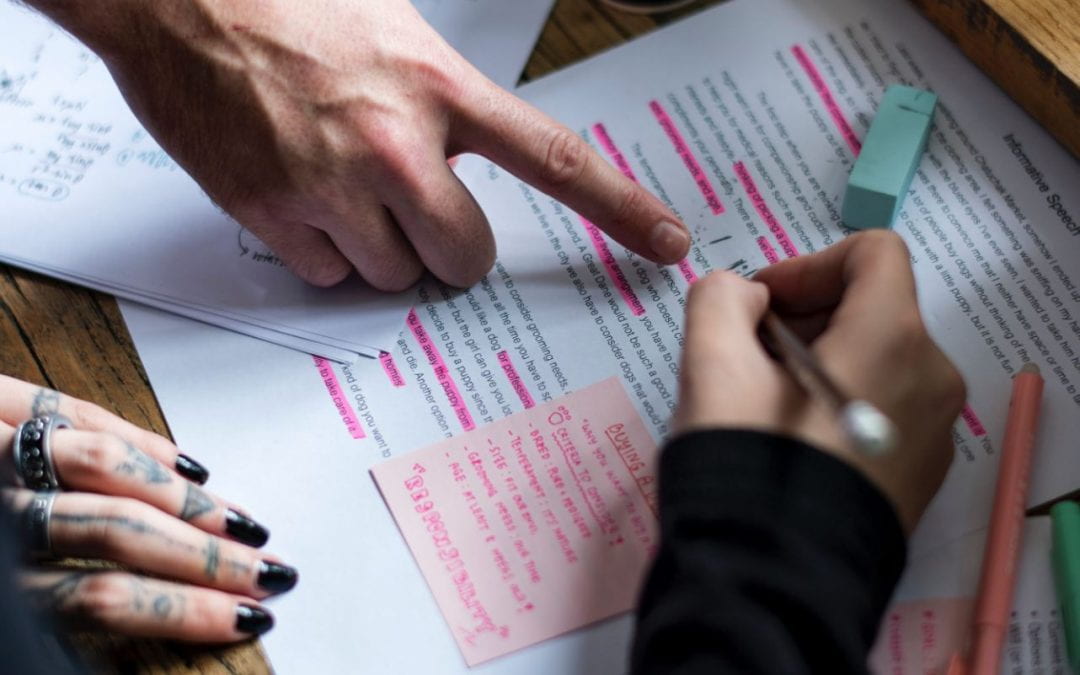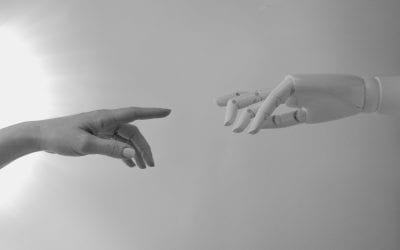Do you find keeping up with the changes from style manuals difficult? Have you ever wondered how much difference exists between APA 5th and 6th editions or MLA 7th and 8th editions? We thought so. One of the more daunting tasks in writing a research paper can be appropriately formatting the Works Cited or Bibliography page. Doing it incorrectly can result in citation errors and plagiarism, even if you do so by accident. Below, you can view guides for properly formatting the Works Cited page in the two most common styles: MLA and APA. This page has been adapted from the APA Publication Manual, 7th Edition and the MLA Handbook, 8th Edition.
Differences Between MLA7 and MLA8
In 2016, the Modern Language Association completely overhauled the MLA style to make it more consistent with and applicable to today’s digital world. Some of the major differences include:
- A universal format for citations, the elements of which are modified or removed as necessary depending on the source.
- URLs, which were traditionally optional, are now strongly recommended.
- The location of the publisher is no longer necessary for most citations.
- Screen names and social media handles are now acceptable stand-ins for author names.
Acceptable Abbreviations in Citations
This is a list of abbreviations that are acceptable within APA6 standards, though they are generally applicable to MLA8 as well.
- ed. – Edition
- Rev. ed. – Revised edition
- 2nd ed. – 2nd edition
- Ed(s). – Editor(s)
- Trans. – Translator(s)
- n.d. – No date
- p(p). – Page(s)
- Vol(s). – Volume(s)
- No. – Number
- Pt. – Part
- Tech. Rep. – Technical Report
- Suppl. – Supplement
MLA Citation Examples
- Article from a periodical:
- Cross, Rob, et al. “Collaborative Overload.” Harvard Business Review, vol. 94, no. 1, Jan. 2016, pp. 74–79. EBSCOhost, https://search.ebscohost.com/login.aspx?direct=true&AuthType=ip,sso&db=bth&AN=111889850&site=ehost-live&scope=site&cus.
- Meyer, Erin. “Being the Boss in Brussels, Boston, and Beijing: If You Want to Succeed, You’ll Need to Adapt.” Harvard Business Review, vol. 95, no. 4, July 2017, pp. 70–77. EBSCOhost, https://search.ebscohost.com/login.aspx?direct=true&AuthType=ip,sso&db=bth&AN=123738571&site=ehost-live&scope=site&custid=s8428489.
- Tan, Edwin L. “Microtransactions in AAA Video Games – Are They Really Necessary?”. Galactica Media: Journal of Media Studies, no. 1, Galactica Media, 2019, pp. 127-147. Galactica Media, https://doi.org/10.24411/2658-7734-2019-00007
- Books:
- Trevino, Linda K. & Katherine A. Nelson. Managing Business Ethics: Straight Talk about How to Do It Right. 7th ed., John Wiley & Sons, Inc., 2017.
- Greenblatt, Steven, et al., editors. The Norton Shakespeare. 3rd ed., W. W. Norton & Company, 2015.
Core Elements of an MLA8 Citation
MLA8 citations utilize a standard format with nine core elements, in the order shown below. Some may be used partially or unused, depending on the source. Please note that this is intended to be a comprehensive guide, and while information has been skimmed down as much as possible, it is still extensive.
- Author: This varies based on the number of authors. The full list of sources is always ordered A to Z by the last name of the first author (or the name, if it is a corporate author or screen name). The author or authors’ names are followed by a period.
- One Author: Write the author’s last name first, followed by a comma and their first name and middle initial (Example: Lipson, Samuel D.). See the “Article” citations for examples in practice.
- Two Authors: Only the name of the first author is reversed (Example: Lipson, Samuel D and Ryan Decker.). See the first “Book” citation for an example in practice.
- Three or More Authors: After the reversed name of the first author, write a comma and the phrase “et al.” (Example: Wordlaw, Evan, et al.). See the second “Book” citation for an example in practice.
- Special Cases: For some sources, the relevant “author” may not be the actual creator, but the individual(s) who edited it, translated it, or played another key role. In this case, their name(s) is followed with a descriptive tag (Example: Sheets, Ryan and Samuel Lipson, editors.). Individuals like this usually go here only if the source has a large number of original authors (a collection of popular essays, for example) or the author is unknown (for example, Beowulf). Otherwise, they are listed under Other Contributors, which is explained below. See the second “Book” citation for an example in practice.
- Title of Source: The title almost always immediately follows the author, and is itself followed by a period. How the title is formatted depends largely on what kind of source it is.
- The source is part of a greater whole: This applies to articles on a website or in a periodical, individual essays or stories in a collection. In this case, the title is surrounded by quotation marks. See the “Article” section of citation examples for this.
- The source is the greater whole: This applies to websites, books, journals, and any source that can be found on its own. This includes sources that are part of a greater collection, as long as the source is normally stand-alone (for example, Romeo and Juliet in an anthology of Shakespeare plays) These sources are italicized. See the “Book” section of citation examples for this.
- The source has no title: Give a general description of the source that is neither italicized or in quotes. This is common for sources with no text information, like photos without captions.
- Title of Container: New to MLA8 is the idea of containers, things that are the greater whole that a source is a part of. Regardless of whether a source in a greater whole can stand on its own or not, the name of the container is still included, and is italicized. The title of the container is followed by a comma.
- If a source has multiple containers (for example, an article in a periodical found on a database like JSTOR), the details of the second-level container (JSTOR in this case) follow the details of the first. Essentially, after you finish citing the details of the first container (components 3-9), you repeat components 3-9 for each subsequent container.
- Even if the source has no container, components 4-9 must still be cited, assuming that there is information for them.
- Other Contributors: Individuals like editors and translators are cited here if the source’s actual author is relevant to the citation. The names of other contributors follow the same naming scheme as the author, but the first contributor’s name is not reversed. The list of other contributors is followed by a comma. (Example: Translated by Raquel Romero and Nathan Riggs.)
- If a contributor is relevant only to the source you are citing but not its container, include it after the title of the source but before the title of the container. An example of this situation is someone who translated a story in collection, but not the entire collection.
- Version: If a source or its container has multiple editions or adaptations, denote which version you are using here. This is a common scenario with religious texts, reference material like print encyclopedias, and textbooks. The version of a source is followed by a comma. See the “Book” section for examples.
- Number: Almost all of the time, “number” here refers to the volume and issue number of a given source or its container, expressed as “vol. x, no. x,” (without the quotations). This component is followed by a comma. It can also apply to containers with a similar method of splitting up individual entries, such as the season and episode number of a TV series. See the “Article” section for examples.
- The distinction between the “version” and the “number” may be somewhat unclear. In short, different “versions” of a source refer to the same core source material albeit with minor structural or content differences between the two. Sources with different “numbers”, on the other hand, refer to entirely different source material; two issues of a periodical do not contain the same articles.
- Publisher: In the event that the publisher and author of a work are distinct (which is common), place the name of the publisher here. Separate multiple publishers with forward slashes (/) between them. The publisher is followed by a comma.
- Publication Date: The date of the publication, written as the numerical day followed by the abbreviation for the month and the year (Example: 24 Sep. 2019). If the exact day or month is not available, include what is. If there are multiple dates of publication, choose the one that is most relevant to you. For example, if you viewed a source online which has different online and print publication dates, choose the one for the online publication, even if it comes later. The publication date is followed by a comma.
- Location: Where the source (or the part of the source that you are using) is located in the container. For any print document (whether accessed online or in print), this refers to the page number(s), expressed as pp. xx-xx. For webpages or online articles, the location is the URL, or the digital object identifier (DOI) if it is available. Physical objects are referenced using the location they can be found in. The location is followed by a period.
- In the case of a print article found online, include both the set of pages and the URL/DOI.
- The DOI is preferable to the URL when it is available because never changes. Something that you may also use is a permalink, which functions in the same capacity as the URL but is designed to be static and easily shareable.
We’ve put the punctuation largely in boldface red type because many readers use the punctuation as a guide when looking at a citation; if the punctuation is off, it can throw off their ability to scan/skim the citation.
Optional Elements of an MLA8 Citation
There are several optional elements that can be included in a MLA8 citation. It is up to the discretion of the author whether they are relevant enough to be added. Here’s how to cite them:
- Date of Original Publication: Consider including this if it helps your reader understand the temporal scale of the source. It is placed immediately after the title and followed by a period.
- City of Publication: Usually only relevant for books written prior to 1900 or books whose contents differ based on publication location (i.e. British vs. American English). In the first case, it replaces the name of the publisher; in the second, it is added immediately before the name of the publisher. The city of publication is followed by a comma.
- Date of Access: Expressed as “Accessed dd Month yyyy.” (without the quotations). This is useful especially when there is no publication date. It is placed at the end of a citation and followed by a period.
These three items are not the only optional elements. MLA style recommends including any other information that you as the author of your scholarly work deem necessary.
APA Citation Examples
- Article from a periodical:
- Cross, R., Rebele, R., & Grant, A. (2016). Collaborative overload. Harvard Business Review, 94(1), 74-79. https://search.ebscohost.com/login.aspx?direct=true&AuthType=ip,sso&db=bth&AN=111889850&site=ehost-live&scope=site&cus.
- Meyer, E. (2017). Being the boss in Brussels, Boston, and Beijing: If you want to succeed, you’ll need to Adapt.
Harvard Business Review, 95(4), 70-77. https://search.ebscohost.com/login.aspx?direct=true&AuthType=ip,sso&db=bth&AN=123738571&site=ehost-live&scope=site&custid=s8428489. - Tan, E. L. (2019). Microtransactions in AAA Video Games – Are They Really Necessary? Galactica Media: Journal of Media Studies, 1, 127-147. https://doi.org/10.24411/2658-7734-2019-00007
- Books:
- Trevino, L. & Nelson, K. (2017). Managing business ethics: Straight talk about how to do it right (7th edition). John Wiley & Sons, Inc.
- In Greenblatt, S. et al. (Eds.). (2015). The Norton Shakespeare (Third Edition). W. W. Norton & Company.
Core Elements of an APA6 Citation
The APA Style Guide identifies the following as the major elements of an APA6 citation: the author and editor information, the publication date, the title of the source, publication information, and locator information for electronic sources. They are explained in detail below. Please note that this is intended to be a comprehensive guide, and while information has been skimmed down as much as possible, it is still extensive.
- Author and Editor Information: APA citations are alphabetized by the last name of the first author. For works with 20 or fewer authors, include every name in the order that they are listed in the source, and use the andpersand (&) before introducing the final author. For sources with 21 or more authors, include the first 19, followed by a set of ellipses points (…) and the last author on the list. In both cases, all authors’ names should be written as LastName, FirstInitial MiddleInital (ex. Lipson, S. D.). For a book with an editor or editors, they go in the place of the author. If only part of a book has an editor, the citation includes the names of the authors, the title of the part of the book, and the names of the editors in that order. The editor’s or editors’ name(s) are preceded by the word “In” and followed by (Ed.) or (Eds.) depending on whether there is one or multiple editors. The editors’ names are inverted if they replace the authors’, but left in normal form otherwise. The list of authors and the list of editors are both followed by periods.
- In works with no author, the title goes first, before the date of publication.
- In works with a large group of editors, use the lead editor’s name followed by et al. The second book citation in the above list of examples shows this in practice.
- Publication Date: Expressed most commonly as the year of publication in parentheses (ex. (2019)). However, include the month and day within the parentheses if it is available (ex. (September 30 2019)). If there is no date available, write (n.d.). The publication date is followed by a period.
- Title: How the title is cited depends on the type of source.
- If the source is an article or chapter from a larger source, capitalize only the first word of the title and subtitle. Do not italicize the title or contain it within quotation marks. Follow with a period. All of the “Article” examples above do this.
- If the source is a periodical of any kind, write the title of the periodical as it is displayed. Italicize the title and follow it with a comma.
- For anything else, follow the same standard for articles and chapters as explained above, but italicize the title. If there is any additional information used for identification (like a publication number or ISBN), include it in parentheses after the title but before the period. Both “Book” examples in the list of citations above show this.
- Publication Information: How this is included also depends on the type of source.
- For a periodical, this is written as “volume(issue), pages.” without quotations. Do not include identifying shorthand such as “vol.”, “no.”, or “pp.” For example, “Reader’s Digest, 88(72), 301-307.” cites pages 301-307 from issue 72 of volume 88 of Reader’s Digest. Follow this information with a period. All of the “Article” examples above do this.
- If the periodically separates by issue but not by volume, this is written as “(issue), pages.”
- For nonperiodical sources, simply give the name of the publisher. The publisher location is no longer required in APA 7. Follow this information with a period. Example: University of Arkansas. Both “Book” examples do this.
- For sources where the publisher is the author, omit this portion of the citation.
- For a periodical, this is written as “volume(issue), pages.” without quotations. Do not include identifying shorthand such as “vol.”, “no.”, or “pp.” For example, “Reader’s Digest, 88(72), 301-307.” cites pages 301-307 from issue 72 of volume 88 of Reader’s Digest. Follow this information with a period. All of the “Article” examples above do this.
- Electronic Sources and Locator Information: Refers almost exclusively to uniform resource locators (URLs) and digital object identifiers (DOIs). DOIs are preferred over URLs as they are static; URLs, which are dynamic, commonly move locations or are removed entirely, making them less than ideal as referential material. Follow the electronic locator with a period.
- URL: To cite a URL, simply put it in the citation as-is. Statements such as “Retrieved from” were removed from the 7th edition of the APA style except when also including a retrieval date, which is usually optional. Be mindful that not all URLs begin with the same protocol (http://, https://, ftp://) nor do they always begin with “www.” If possible, try to use a permalink, a URL designated as the permanent director to a source material. The first two “Article” examples make use of permalinks.
- DOI: DOIs are now exclusively cited as a link to https://www.doi.org or a similar website instead of the APA6 standard of “doi:xxxxxxxxx”. If you are able to use a DOI, a URL is unnecessary. The third “Article” example makes use of such a link.
- If the source was an online work retrieved from an academic database and it has no DOI, a URL is generally unnecessary. Functionally, the citation would appear identical to its print version.
As before, we’ve put the punctuation largely in boldface red type because many readers use the punctuation as a guide when looking at a citation; if the punctuation is off, it can throw off their ability to scan/skim the citation.
Recently Created Resources
Using ChatGPT Effectively and Ethically
Chat GPT is an AI-powered bot that can generate text based on prompts from a user. Like all tools, it is only as good as its user. ChatGPT can help users generate ideas quickly, create outlines and rough drafts, polish grammar and word choice, and function much like a...
Analyzing and Responding to a Case Study
Case study assignments can feel difficult, especially if this is your first time working on one. In this article, we’re going to discuss what a case study is and some tools you can use to help your assignment feel more manageable.
Managing Your Tone with Word Choice and Sentence Length
Tone denotes the perceived attitude of the writer toward the subject and their intended audience. One of the ways you can modulate your tone is through word choice and sentence length.




